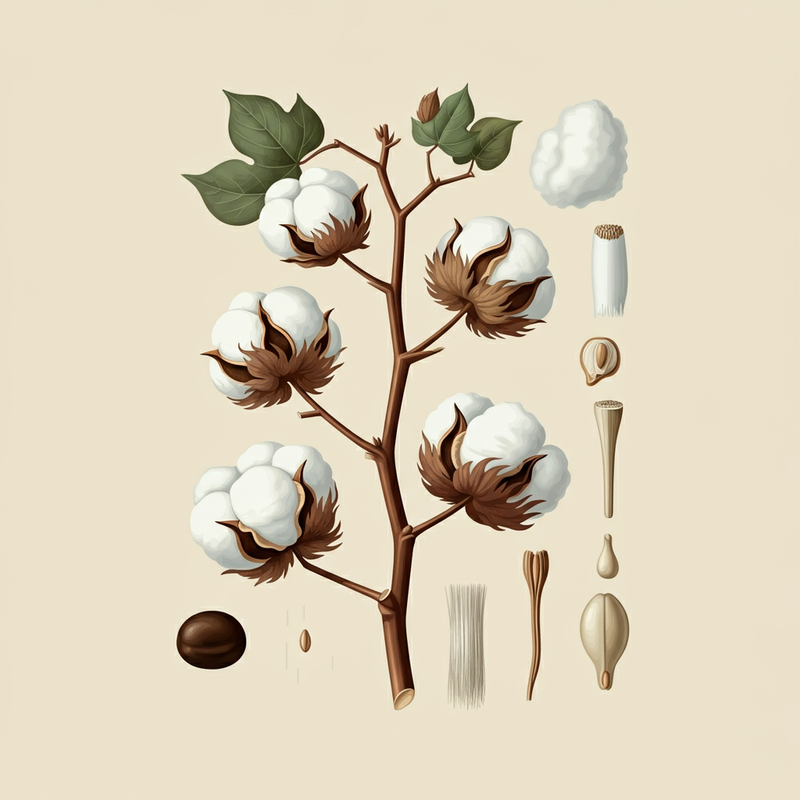
Coloured cotton fibres are usually shorter and fewer uniform than white cotton fibres, which may end up in a coarser texture. Having said that, the purely natural pigmentation of coloured cotton gives a unique, earthy aesthetic that may be increasingly well known in sustainable manner.
Conventional cotton output involves a lot more insecticides than every other big crop, as well as production of natural cotton, which depends on nonsynthetic insecticides, is rising in several areas globally. In addition, genetically modified “Bt cotton” was made to supply bacterial proteins which have been harmful to herbivorous insects, ostensibly reducing the quantity of pesticides needed. Glyphosate-resistant cotton, which can tolerate the herbicide glyphosate, was also formulated through genetic engineering.
Cotton will be the leading normal fiber on the market, making up virtually 50 percent of all textiles. It's derived from cotton plants, that have small white fluffy fibers that could be spun into cotton thread and then woven into or knitted into stretchy fabrics.
As the globe appears to be for renewable Vitality resources, cotton linters have discovered a niche in biofuel production. The cellulose material in cotton linters might be transformed into bioethanol, a cleanse-burning gas that may lessen dependence on fossil fuels.
Cotton bales within the port in Bombay, India, 1860s The English East India Company (EIC) launched the British to cheap calico and chintz cloth around the restoration of the monarchy from the 1660s. At first imported like a novelty side line, from its spice trading posts in Asia, the cheap colourful fabric proved common and overtook the EIC's spice trade by value during the late 17th century. The EIC embraced the desire, significantly for calico, by growing its factories in Asia and manufacturing and importing cloth in bulk, developing Levels of competition for domestic woollen and linen textile producers. The impacted weavers, spinners, dyers, shepherds and farmers objected as well as calico query became among the important problems with Nationwide politics between the 1680s as well as the 1730s. Parliament began to see a decrease in domestic textile sales, and an increase in imported textiles from sites like China and India. Viewing the East India Company as well as their textile importation like a risk to domestic textile organizations, Parliament passed the 1700 Calico Act, blocking the importation of cotton fabric.
Cotton linters are in sheet sort cotton linters pulp and sold by the pound. Each individual sheet actions thirty" x 27" and weighs Pretty much 1 pound. Even so we may perhaps Slash sheets to fit additional quickly into containers. Cotton linters may be processed very very easily inside of a kitchen area blender or other method of mixer if a Hollander beater is unavailable.
Egyptian cotton sheets are significantly valued for his or her ability to turn out to be softer with Every clean, making them an expense in consolation.
Cotton fibers considered beneath a scanning electron microscope Dependent upon the origin, the chemical composition of cotton is as follows:[131]
Cotton is One of the more greatly used natural fibers on the planet. It is an unbelievably versatile commodity, from comfortable t-shirt fabrics to bedsheets and denims.
Back again h2o is additional and Alkali information is modified for cooking Procedure which happens to be simultaneously performed along with fibers chopping. Cooking operation is done at higher pulp consistency (35%) and temperature at BIVIS discharge is 90°C. No steam is required for cooking action since the conversion of electrical Electrical power into warmth throughout the process is substantial sufficient for wax, Excess fat, pectin and proteins dissolving and cellulosed international sections degradation.
It is particularly well-known in the creation of toddler clothes and bedding, exactly where the absence of chemical compounds is significant. Organic cotton can be used sustainably, aligning with eco-friendly and ethical creation values.
Natural and organic cotton is of course cultivated and harvested, without having artificial fertilizers or pesticides used all through its expansion. This environmentally friendly substance derives from non-GMO vegetation which can be freed from manipulation.
Cotton combers, waste from combing machines used in textile marketplace, are extensive fibers (as many as 2cm). Cotton threads and cotton rags makes it possible for acquiring very long fibers. Both equally of these are generally wastes from textile market. These fibers are used for really substantial beneficial papers such as financial institution note paper.
Chloroplasts perform the entire process of photosynthesis: they harness Power from sunlight to turn carbon dioxide (in the air) and h2o into glucose.